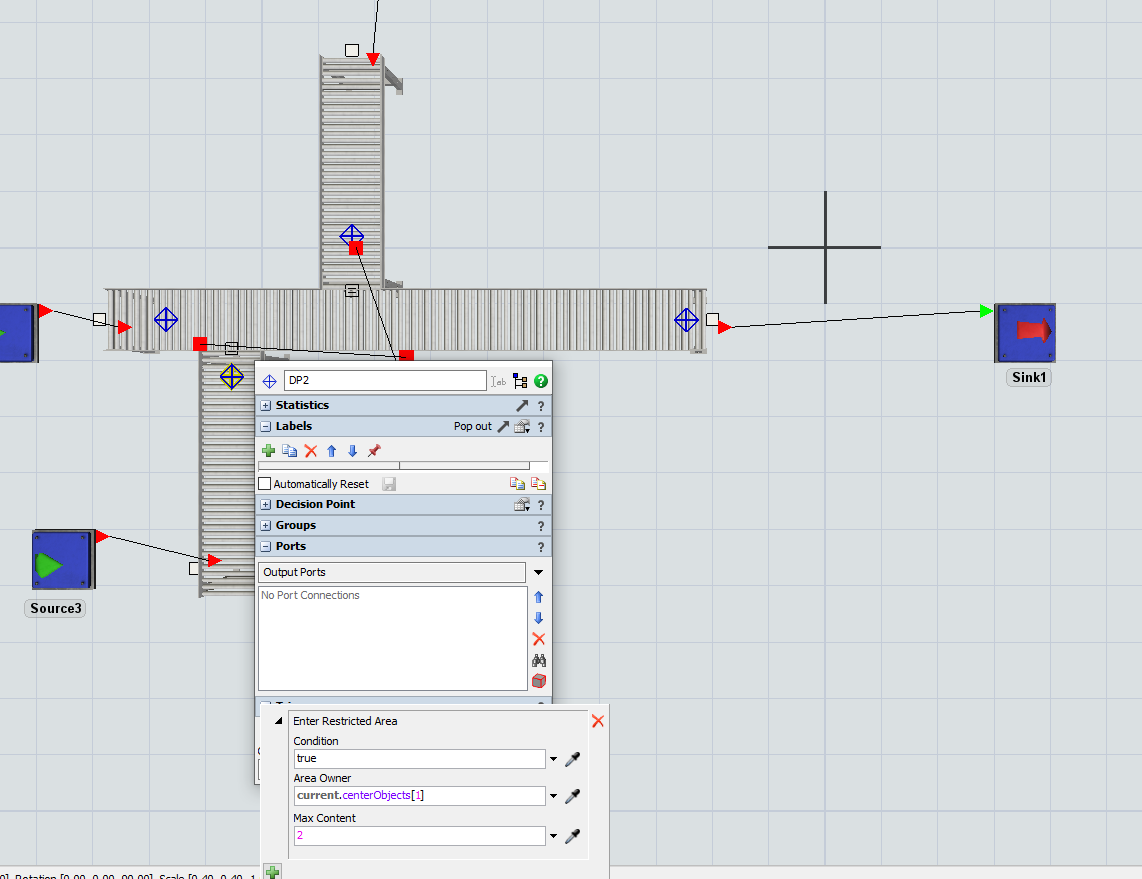I have a section of conveyor. I want to limit the number of items entering the conveyor from several different conveyors. So I added control points near the end of each entering conveyor, with an on-continue trigger to enter restricted area. It almost works as I hoped. Actually, it works just fine as long as all three entry points use the same limit. But if the entry points have different limits, then FlexSim uses only the higher of the limits for all three of the entries.
In the model from the screen cap, the other two entry control points have Max Content settings of 2 and 4 respectively, and the model treats the merge from below as if it were set to Max Content of 4.
Is this a bug? and if not, how can I do what I need? (hopefully without a lot of code - this is in many places in the actual model.)

